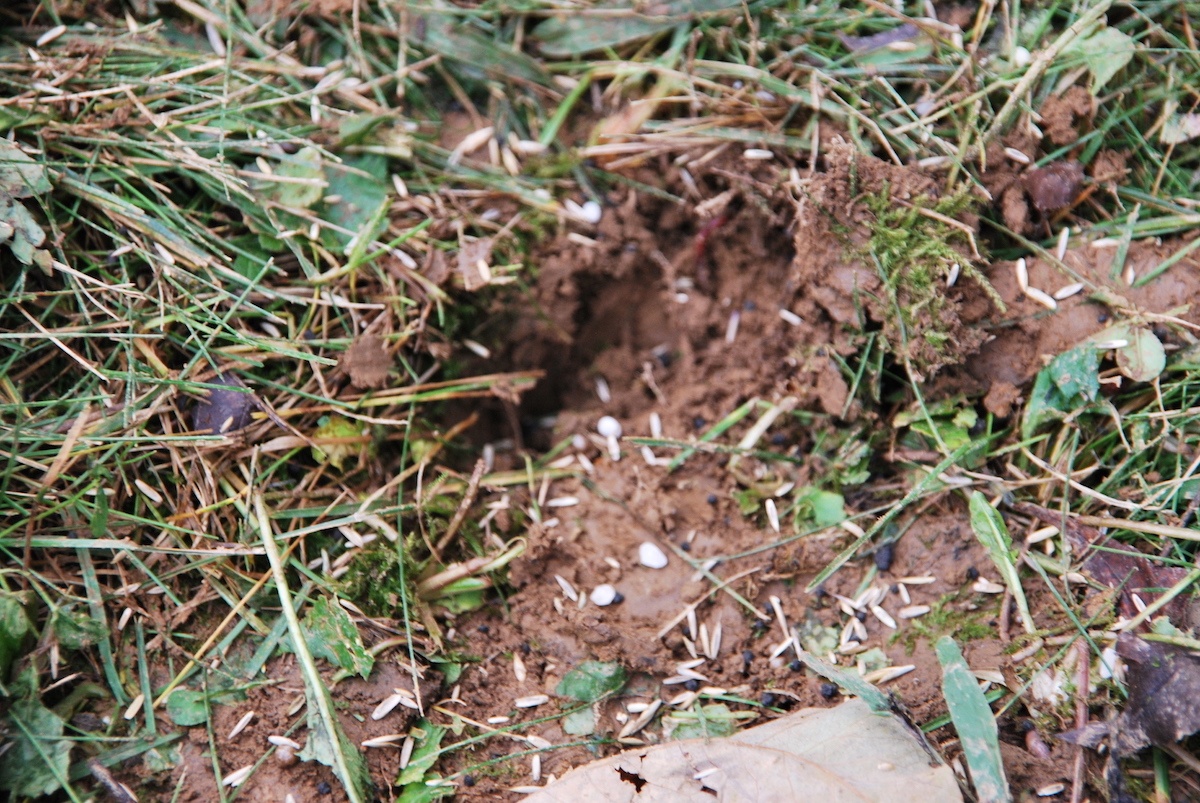Bare spots in the lawn can be a huge source of frustration. Not only is it embarrassing that your lawn doesn’t look its best, but a thinned out lawn is also much more prone to getting weeds
While you know you want to improve your lawn’s appearance, you also don’t want to be hasty in making a decision to seed your lawn if it’s not going to work. The last thing that you want to do is waste your money.
That’s why you may be wondering: Can I seed my lawn in the spring?
We’ll answer that question in order to help you make the best decision for seeding your lawn.
Can I Seed My Lawn in the Spring?
The short and simple answer is yes, you could perform spring lawn seeding, but it might not be the wise choice. That’s because spring seeding is a bit more complicated than you may realize.
There are some important things that you should know before you seed your lawn in the spring.
Problems with Spring Seeding
At first thought, spring might seem like a good time to seed. The weather is warm, you’re outside a lot, and you might even be seeing a lot of seed products advertised at the stores.
But there are two key reasons why seeding your lawn in the spring is not the best idea.
1. Weather Conditions
Grass seed needs warm soil temperatures, cooler nights, and a lot of moisture to germinate and continue to grow. These are the ideal conditions to allow your lawn to develop a healthy root system.
Unfortunately, in the springtime, the hot and dry season is just around the corner. And summer is the most difficult time for a lawn to thrive. Even a mature lawn can struggle with the intense heat we receive in this region.

A new spring lawn probably won’t make it. Most people aren’t aware of just how long it takes for grass to mature. With the right conditions, it could look mature on the surface, but the truth is that it takes about 9 to 10 months for the root systems to be mature enough to handle typical stresses from drought and heat.
2. Weed Control
The other key reason why it is typically a mistake to perform spring lawn seeding is the fact that you will not be able to have crabgrass control product down.
That’s because the product will not know the difference between desired turfgrass seed and a crabgrass seed. As a result, it will prevent both from growing. If you were to perform spring lawn seeding, you would have to forgo crabgrass control.
When Spring Seeding Is Okay
While it’s true that you can seed your lawn in the spring, the more complex answer is that it is best not to, for the very reasons we’ve described above. However, there are some exceptions to that rule.
For 98 percent of our clients, we would not seed their lawn in the spring. That’s because their bare spots simply aren’t bad enough for them to want to forgo weed control or struggle with getting seed to grow.

However, for a small percentage of new clients who come to us with lawns in very bad condition—not a few bare spots, but many bare spots—we will change up the plan.
In those less-common instances, we will make the bare spots a priority over weed control in order to get their lawn going. But it also means they need to stay on top of watering multiple times a day in order to help get that new grass through the coming hot season.
Every lawn is looked at on a case-by-case basis and in some instances such as this, spring lawn seeding might be an option. If it’s not, and you have to live with a few bare spots until fall seeding, don’t be discouraged. Most people underestimate what a big difference a lawn care program can make in the meantime.
The Best Time to Seed Your Lawn
For the vast majority of clients, spring seeding is a bad idea. Instead, you should wait until the fall when the conditions are truly ideal for your lawn to thrive. The nighttime air is cool, the ground is moist, and the soil is still warm. These are the best growing conditions for your grass seed to germinate and grow strong and healthy roots.
This will give you 8 to 10 months for your lawn to mature before next summer, when it will have to battle drought and heat (versus the 1 to 2 months you would have had if you seeded in the spring).

By choosing to wait until the fall, you will also give your new grass seed plenty of time to mature so that come next spring, you can apply crabgrass control with no concerns.
It’s also worth noting that crabgrass germination is not an issue in the fall. In the fall, you’ll be able to spray for broadleaf weeds, seed a week or two later, and then watch your lawn continue to improve.
In the fall, you can also have seeding performed at the same time as a professional aeration service, truly giving your new grass seed the best start.
Choosing a Lawn Care Company
Of course, there are always going to be lawn care companies who will perform spring lawn seeding no matter what. Instead of looking at it on a case-by-case basis, these companies will perform springtime aeration and overseeding just to earn some extra cash.
It’s important that you choose a company that is going to do what’s best for your lawn, not their revenue stream. And for most lawns that is going to mean holding off until the fall to seed.
By choosing a company like this, you’ll have the most possible success with a healthy and thriving lawn.
With the right care for your lawn, you’ll gain valuable peace of mind. If you’re interested in having your lawn inspected and its health assured, contact us for a free quote or give us a call at 833-JTE-TREE.



